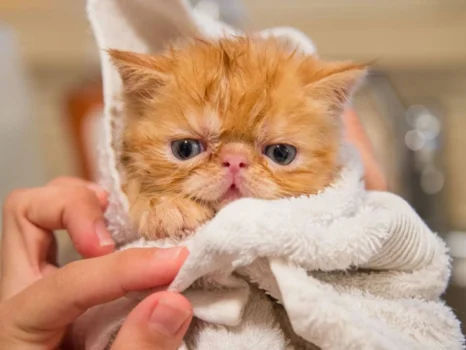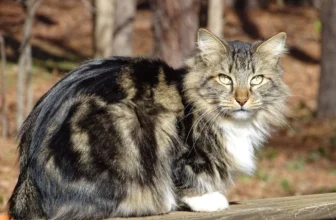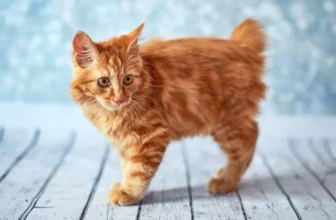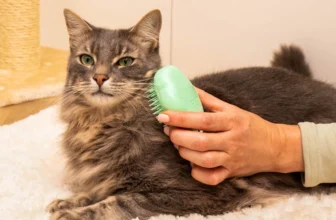You may have noticed that your furry American Bobtail is in need of a good bath. While there are plenty of cat shampoos available on the market, they can be expensive and often contain harsh chemicals that could irritate your cat’s skin. That’s where homemade cat shampoo comes in! By making your own cat shampoo at home, you can save money and have peace of mind knowing that you’re using safe and natural ingredients on your pet. In this article, we’ll go over why homemade cat shampoo is a great option for your American Bobtail, the ingredients you’ll need, and step-by-step recipes for making your own cat shampoo at home.
Why Should You Use Homemade Cat Shampoo?
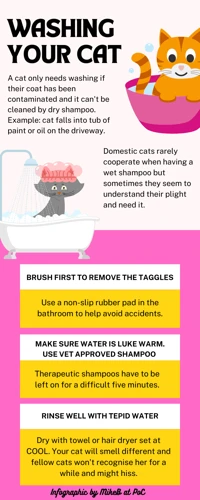
Using homemade cat shampoo for your American Bobtail can provide numerous benefits for both you and your furry friend. Below are some reasons why homemade cat shampoo is a great option:
Traditional shampoos can contain a variety of harsh chemicals that can harm your American Bobtail’s skin and coat. Homemade cat shampoo, on the other hand, typically consists of natural and safe ingredients that won’t irritate their skin. By using homemade cat shampoo, you can ensure that you’re not exposing your furry friend to any unnecessary toxins.
Many store-bought cat shampoos can be quite expensive, especially if you’re looking for a high-quality brand that is free of harsh chemicals. Homemade cat shampoo, on the other hand, can be made using simple and affordable ingredients that you may already have in your kitchen. This can save you money in the long run and allow you to provide your American Bobtail with a quality grooming experience without breaking the bank.
By using homemade cat shampoo, you can help reduce your carbon footprint and avoid contributing to harmful chemicals that can end up in our water supply. Store-bought shampoos often come in large plastic bottles that are not eco-friendly and can contribute to environmental pollution. Homemade cat shampoo, on the other hand, can be made in small batches and stored in reusable containers, making it a more sustainable option.
Using homemade cat shampoo is a safe, affordable, and eco-friendly option for grooming your American Bobtail. To learn more about bathing your cat, check out our article on bathing your American Bobtail.
No Harmful Chemicals
Keeping your pet clean and well-groomed is an essential part of maintaining their health and happiness. However, some commercial pet shampoos may contain harmful chemicals that can irritate their skin and cause allergic reactions. That’s why using a homemade cat shampoo for your American Bobtail is an excellent choice for pet owners who want to ensure their cat’s bathing experience is completely safe and natural. By using organic ingredients, you can help prevent any adverse reactions and keep your pet’s skin healthy and moisturized. If you want to learn more about how using homemade cat shampoo can benefit your American Bobtail, continue reading.
Affordable
One of the biggest benefits of making your own cat shampoo is that it is affordable. Many store-bought cat shampoos can be quite expensive, especially those that are formulated for specific breeds or skin conditions. By making your own cat shampoo at home, you can save yourself a lot of money in the long run. Most of the ingredients you need for homemade cat shampoo are readily available at your local grocery store or online, and they are often much cheaper when purchased in bulk. Plus, you can adjust the recipe to suit your budget and the needs of your American Bobtail.
Some of the affordable ingredients you can use to make homemade cat shampoo include:
- Baking soda: Baking soda is a natural cleanser that can help neutralize odors on your cat’s fur and skin. It is also very affordable and can be found in most grocery stores.
- Castile soap: Castile soap is a versatile and natural soap that can be used for a variety of cleaning tasks. It is often used as a base for homemade cat shampoos and is very affordable, especially when purchased in bulk.
- Oatmeal: Oatmeal is a gentle and soothing ingredient that can help calm irritated skin in cats. It is also a low-cost ingredient that can be found in most grocery stores or online.
- Coconut oil: Coconut oil is a popular ingredient in many homemade cat shampoos because it can help moisturize and condition your cat’s fur and skin. It is also an affordable ingredient that can be found at most grocery stores or online.
With these affordable ingredients, you can create your own custom cat shampoo that is safe and effective for your American Bobtail. Plus, by making your own shampoo, you can avoid unnecessary chemicals and additives that can harm your cat’s skin or coat. However, it is important to note that homemade cat shampoo may not be suitable for all cats, especially those with sensitive skin or allergies. If you have any concerns about using homemade cat shampoo on your American Bobtail, consult with your veterinarian for guidance.
If you want to learn more about bathing your American Bobtail or other cat-related topics, be sure to check out our other articles for tips and advice.
Internal link: American Bobtail Bathing Frequency: How Often Should You Bathe Your Feline Friend?
Better for the Environment
Using homemade cat shampoo is not only safe for your American Bobtail, but it is also better for the environment. Traditional pet shampoos often contain harsh chemicals that can be harmful to both your cat and the planet. By making your own shampoo, you can help reduce your pet’s exposure to harmful chemicals and minimize your environmental impact.
Harsh chemicals in traditional pet shampoos
Many traditional pet shampoos contain chemicals like parabens and sulfates that have been linked to skin irritation, allergies, and even cancer in some cases. Additionally, these chemicals can be harmful to marine life if they are not properly disposed of, contributing to water pollution and ecosystem damage.
Reduced environmental impact
When you make your own cat shampoo, you can choose natural and biodegradable ingredients that are less harmful to the environment. Plus, making your own shampoo reduces the need for excess packaging that traditional store-bought shampoos come in, further reducing your environmental footprint.
Cost-effective
Another benefit of making your own cat shampoo is that it can be cost-effective in the long run. While the upfront costs of buying ingredients can add up, they will last for multiple uses and eliminate the need for purchasing pet shampoo regularly. Plus, the ingredients used in homemade shampoos can often be used for other household purposes as well.
Using homemade cat shampoo is not only better for your cat’s health but also has positive impacts on the environment and your budget. Give it a try and see the difference it can make for your American Bobtail. For more information on the best shampoos for American Bobtails, check out our guide to the best shampoos for American Bobtails.
Ingredients You Will Need
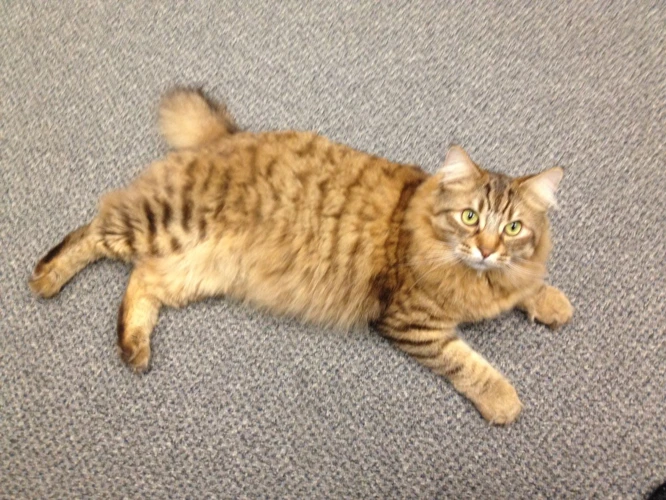
When making homemade cat shampoo for your American Bobtail, it’s important to use ingredients that are safe and effective. Here are the key ingredients you will need to make DIY cat shampoo:
Baking Soda: Baking soda is a natural deodorizer that can help remove unpleasant smells from your cat’s fur.
Oatmeal: Oatmeal is a common ingredient in many commercial cat shampoos and is known for its soothing properties. It can help soothe dry and itchy skin caused by allergies or other skin conditions.
Coconut Oil: Coconut oil is a moisturizing ingredient that can help keep your cat’s fur soft and shiny. It also has antibacterial and antifungal properties that can help prevent skin infections.
Aloe Vera: Aloe vera is a natural ingredient that can help soothe and moisturize your cat’s skin. It’s also rich in vitamins and antioxidants that can help promote a healthy coat.
Lavender Essential Oil: Lavender essential oil is known for its calming and relaxing properties. It can help soothe your cat during bath time and leave its coat smelling fresh.
Chamomile Tea: Chamomile tea is a natural ingredient that can help soothe irritated skin and reduce inflammation. It can also have a calming effect on your cat.
These ingredients can be easily found at your local grocery or health food store. Keep in mind that some cats may be allergic to certain ingredients, so it’s important to test a small amount of the shampoo on your cat’s skin before using it all over. If you notice any signs of irritation or an allergic reaction, discontinue use immediately and consult your veterinarian.
Make sure you have all the ingredients ready before you start making the shampoo. It’s important to measure the ingredients carefully, following the recipe instructions to ensure a safe and effective shampoo for your American Bobtail. Once you have gathered all ingredients, you can move on to the fun part – making the shampoo!
If you want to learn more about bathing your American Bobtail, you can read our article about Bobtail Kitten Bath Tips.
Recipes for Homemade Cat Shampoo

Making your own cat shampoo at home is not only affordable, but it eliminates the use of harmful chemicals that can cause allergic reactions, irritation, or even illness to your American Bobtail. Here are three DIY homemade cat shampoo recipes that you can easily make and use for your feline friend’s bath time:
Recipe 1: All-Natural Oatmeal Shampoo
Oatmeal is a great ingredient to soothe your cat’s skin and relieve any irritation. Here’s how to make an all-natural oatmeal homemade cat shampoo:
Ingredients:
– 1 cup of oatmeal
– 1/4 cup of baking soda
– 1 quart of warm water
Instructions:
1. Grind the oatmeal into a fine powder using a blender or food processor.
2. Mix the oatmeal powder, baking soda, and warm water together in a large bowl.
3. Stir the mixture until it is well-combined.
4. Transfer the mixture into a clean, empty bottle or container for easy use.
Recipe 2: Coconut Oil and Aloe Vera Shampoo
Coconut oil and aloe vera are both great moisturizers for your American Bobtail’s skin, leaving their coat looking shiny and feeling soft. Here’s how to make a coconut oil and aloe vera homemade cat shampoo:
Ingredients:
– 1/2 cup of coconut oil
– 1/2 cup of liquid castile soap
– 1/4 cup of aloe vera gel
– 1/2 cup of water
Instructions:
1. Melt the coconut oil in a small pan or microwave until it is completely liquid.
2. Mix the melted coconut oil, liquid castile soap, aloe vera gel, and water together in a large bowl.
3. Stir the mixture until it is well-combined.
4. Transfer the mixture into a clean, empty bottle or container for easy use.
Recipe 3: Lavender and Chamomile Shampoo
Lavender and chamomile have natural calming properties that can help soothe your American Bobtail’s nerves during bath time. Here’s how to make a lavender and chamomile homemade cat shampoo:
Ingredients:
– 1/2 cup of liquid castile soap
– 1/4 cup of dried lavender flowers
– 1/4 cup of dried chamomile flowers
– 1 cup of water
Instructions:
1. Boil the water in a small pot and add the dried lavender and chamomile flowers to it.
2. Turn off the heat and let the flowers steep in the water for 10-15 minutes.
3. Strain the flower-infused water and discard the flowers.
4. Mix the flower-infused water and liquid castile soap together in a large bowl.
5. Stir the mixture until it is well-combined.
6. Transfer the mixture into a clean, empty bottle or container for easy use.
Using these homemade cat shampoos will not only make your American Bobtail’s fur clean and fresh but also keep their skin healthy and prevent any allergic reactions. Give these recipes a try and see which one your cat likes the most. Remember to always use warm water, and try to avoid getting water or shampoo in their ears or eyes during the bath.
In addition to using the right shampoo, it is important to also brush your American Bobtail’s coat regularly to remove any tangles or mats, which can make bathing a lot easier. Check out our article about the importance of brushing your American Bobtail before bathing to learn more about this topic.
And after the bath, you’ll want to make sure to dry your cat off properly as well. Learn more about drying techniques for American Bobtails to make sure you’re doing it correctly and avoiding any potential health issues associated with improper drying.
Avoid making these common bathing mistakes and follow our tips for a successful bath time to ensure that your American Bobtail enjoys bath time and comes out smelling fresh and clean.
Recipe 1: All-Natural Oatmeal Shampoo
When it comes to grooming your American Bobtail, finding the right cat shampoo can be a daunting task, especially if you are concerned about the safety of commercial products on the market. However, with this all-natural oatmeal shampoo recipe, you can ensure that your cat’s skin stays healthy and moisturized, without exposing them to any harsh chemicals. Made with simple ingredients that you may already have at home, this oatmeal shampoo is not only easy to make but also gentle on your cat’s skin. Let’s dive into the recipe and learn how to make it step-by-step.
Recipe 2: Coconut Oil and Aloe Vera Shampoo
This recipe for homemade cat shampoo uses two all-natural ingredients: coconut oil and aloe vera. Both of these ingredients are gentle on your American Bobtail’s skin and coat, making it the perfect solution for cats with sensitive skin. Coconut oil is known for its moisturizing properties, while aloe vera can soothe irritated skin and promote healing. Here’s how to make this gentle and effective shampoo:
| Ingredients | Instructions |
| 1/4 cup coconut oil | Measure out 1/4 cup of coconut oil and place it in a microwave-safe bowl. |
| 2 tablespoons aloe vera gel | Add 2 tablespoons of aloe vera gel to the bowl with the coconut oil. |
| 1/4 cup liquid castile soap | Add 1/4 cup of liquid castile soap to the bowl and stir well. |
| 10 drops lavender essential oil | Add 10 drops of lavender essential oil to the bowl and mix well. |
| 10 drops chamomile essential oil | Add 10 drops of chamomile essential oil to the bowl and mix well. |
To use, wet your American Bobtail with warm water and apply the homemade shampoo to their coat. Be sure to avoid getting the shampoo in their eyes, ears, and nose. Massage the shampoo into their fur, taking care to work it into all the nooks and crannies. Rinse your cat thoroughly with warm water until all the shampoo is gone.
This coconut oil and aloe vera shampoo is gentle enough to use on your American Bobtail every week, if needed. Plus, the lavender and chamomile essential oils will leave your cat smelling fresh and clean. Give this recipe a try and see how it works for your feline friend.
Recipe 3: Lavender and Chamomile Shampoo
This homemade cat shampoo recipe uses lavender and chamomile, which have calming properties that can help soothe your American Bobtail during bathtime. Here are the ingredients you will need:
| Ingredients | Amount |
|---|---|
| Liquid Castile soap | 1/4 cup |
| Aloe vera gel | 1/4 cup |
| Distilled water | 1/4 cup |
| Essential oils (lavender and chamomile) | 5-10 drops each |
To make the shampoo, simply mix all of the ingredients together in a bowl. The consistency should be smooth and creamy.
Pro tip: Essential oils can be potent, so make sure to properly dilute them before using them on your cat.
This gentle shampoo will leave your American Bobtail smelling fresh and clean, while also providing a calming and relaxing effect. Remember to always test the shampoo on a small area of your cat’s skin before using it all over, just to ensure they don’t have an adverse reaction.
How to Bathe Your American Bobtail
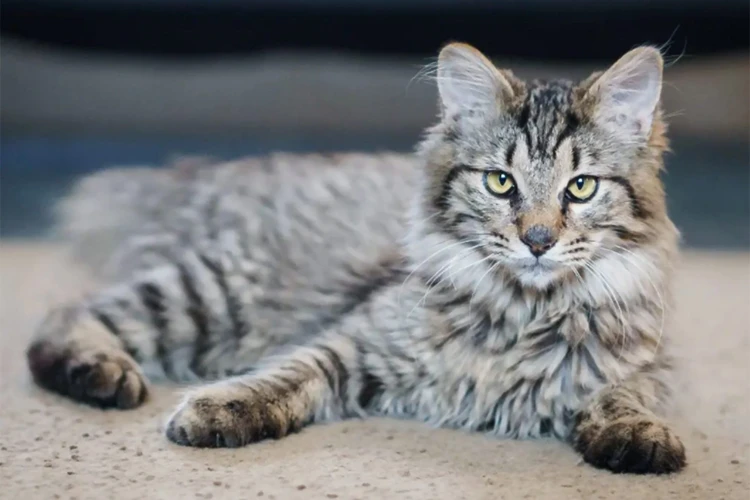
Bathing your American Bobtail can be a daunting task but it is necessary to maintain the health and hygiene of your furry friend. Here’s a step-by-step guide on how to bathe your American Bobtail.
Gather Your Supplies: Before you start bathing your American Bobtail, it’s important to have all the necessary supplies. You will need a gentle and natural homemade cat shampoo, towels, a non-slip mat, a cup or spray nozzle, and a brush.
Prepare the Bathroom: Next, you’ll want to prepare your bathroom for the bath. It’s important to ensure that your bathroom is warm, draft-free, and has good ventilation. Close all windows and doors to prevent drafts and create a comfortable environment for your cat.
Fill the Tub or Sink: Fill your tub or sink with warm water. Be sure to only fill the tub or sink with just enough water to cover your cat’s paws. Be sure to use a non-slip mat in the tub or sink to avoid accidents.
Wet Your Cat: Gently wet your American Bobtail with the warm water. Be sure to avoid getting water in your cat’s ears and eyes. You can use a spray nozzle or a cup to wet your cat.
Shampoo Your Cat: Apply the homemade cat shampoo on your cat’s fur and lather it gently. Massage the shampoo into your cat’s fur, making sure to avoid sensitive areas like the eyes, nose, and ears. Be sure to follow the instructions for the specific homemade cat shampoo recipe you’re using.
Rinse Your Cat: Rinse your American Bobtail with warm water until all the shampoo is washed away. Be sure to rinse the shampoo off thoroughly, as leftover shampoo can cause skin irritation.
Dry Your Cat: After rinsing, place your cat on a towel and wrap them up, petting them and drying them off gently. Avoid using a hair dryer, as the noise can be scary for cats.
Tips for a Successful Bath Time: It’s important to make bath time a positive experience for your American Bobtail. Here are some helpful tips to make the process smoother:
– Start Young: Introduce your cat to bath time when they are still a kitten, as they will be more accepting and comfortable with the process.
– Be Gentle: Be gentle with your cat throughout the entire process. Speak softly and offer lots of praise and affection.
– Use Treats as Positive Reinforcement: Reward your cat with treats and toys to make the process more fun and enjoyable.
By following these steps and tips, you can make bath time a positive and enjoyable experience for both you and your American Bobtail.
Gather Your Supplies
Before you begin bathing your American Bobtail, make sure you have all the necessary supplies within reach. The last thing you want is to have to leave your cat unattended in the tub or sink while you search for something. It’s important to have everything prepared beforehand to make the bathing process as smooth and stress-free as possible. Here are the essential supplies you will need:
Prepare the Bathroom
Before you start bathing your American Bobtail, it is crucial to prepare the bathroom. This will ensure a smooth and stress-free bathing experience for both you and your furry friend.
Here are some steps to prepare the bathroom:
- Clean Bathroom: Make sure your bathroom is clean and clutter-free. Clear any objects or obstacles that may get in the way while bathing your cat. Remove any breakable items as well, as cats tend to be quite jumpy during bath time.
- Warm and Non-Slip Surface: Ensure that the surface where you will bathe your cat is warm, non-slippery, and comfortable for your cat. Use a rubber mat or towel to prevent your cat from slipping and sliding while bathing. You want your cat to feel secure while in the tub or sink.
- Waterproof Apron: Wear a waterproof apron to keep yourself dry and clean during washing. This will help protect your clothes and prevent you from getting too wet. You can find waterproof aprons at most pet stores or online.
- Towels and Wash Clothes: Have plenty of towels and washcloths ready to dry your cat after the bath. Make sure they are clean and within reach.
- Shampoo and Other Supplies: Have all the supplies you need for the bath within reach, including the homemade cat shampoo, a pitcher or jug for rinsing, and a cup for pouring water over your cat’s head without getting water in their eyes.
Preparing the bathroom is an essential step in ensuring a successful and stress-free bath time for your American Bobtail. By following these simple steps, you’ll ensure that your cat feels secure and comfortable throughout the entire bathing process.
Fill the Tub or Sink
Filling the Tub or Sink
Before you start water experiment, adjust the temperature and fill the tub or sink with water up to a few inches. It’s important to make sure the water is lukewarm, not too hot or too cold. Here are some tips to consider:
| Tip | Description |
|---|---|
| Use a Non-Slip Surface | Place a towel or rubber mat at the bottom of the tub or sink to prevent your American Bobtail from slipping and sliding while you bathe them. |
| Avoid Spraying Water Directly on Their Head | Most cats don’t enjoy getting their head wet, so try to avoid spraying water directly on their face. Instead, use a cup or small container to pour water over their head and avoid getting water into their eyes and ears. |
| Don’t Overfill the Tub or Sink | You only need a few inches of water to wash your cat, so avoid overfilling the tub or sink. This will also help prevent your cat from getting scared or uncomfortable in deep water. |
| Keep the Water Temperature Consistent | Make sure the water temperature is consistent throughout the bath. This will help your American Bobtail feel more comfortable and relaxed. You can adjust the temperature by adding more hot or cold water as needed. |
By following these tips, you can ensure a safe and comfortable bathing experience for your American Bobtail. Remember to always supervise your cat during bath time, and never leave them unattended in the water.
Wet Your Cat
Before you start wetting your American Bobtail, you should make sure that the water is warm, but not hot. The temperature of the water should be comfortable for your cat. To make sure that your cat is comfortable, you can test the water with your elbow or wrist to make sure it is not too cold or too hot.
Once the water is at the right temperature, it’s time to wet your cat. This can be a bit of a challenge, as not all cats enjoy getting wet. Here are some steps you can follow to make the process go more smoothly:
| Step 1: | Slowly place your American Bobtail in the tub or sink |
| Step 2: | Use a cup, pitcher or hose to wet your cat’s fur starting from the neck and shoulders |
| Step 3: | Be careful not to get water in your cat’s ears as it can cause infection |
| Step 4: | Wet your cat’s entire body, including the feet, belly, and tail. Be sure to get the fur wet down to the skin to ensure a thorough cleaning. |
It’s important to note that not all cats will enjoy getting wet, and it may take some time for your American Bobtail to get used to the feeling of water on their fur. Be patient, move slowly and be gentle during the entire bathing process. If your cat is particularly resistant, you may need to start with just wetting their paws and slowly work your way up to a full bath.
Shampoo Your Cat
When shampooing your American Bobtail, it’s important to be mindful of their sensitive skin and avoid applying shampoo directly to their face, ears, and eyes. Follow these steps to ensure a safe and effective shampooing experience for your furry friend:
Step 1: Wet your cat’s fur thoroughly with lukewarm water, making sure to avoid their face.
Step 2: Apply a small amount of homemade cat shampoo to your hands and lather it up into a foam.
Step 3: Starting at your cat’s neck, carefully work the shampoo into their coat, massaging with your fingertips in a gentle circular motion. Be sure to cover all areas, and pay extra attention to particularly soiled areas or areas that tend to accumulate oil, like the neck, back, and base of the tail.
Step 4: Rinse the shampoo out thoroughly, making sure to remove all traces of foam from your cat’s coat.
Step 5: If necessary, repeat the shampooing process as needed, being careful not to overuse shampoo or strip your cat’s skin of natural oils.
Step 6: Once your American Bobtail is fully shampooed, it’s time to rinse them off with lukewarm water. Be sure to rinse thoroughly, making sure no shampoo residue remains on their skin or coat.
Using a homemade cat shampoo can help ensure that your American Bobtail has a positive and healthy grooming experience. By following these steps and being gentle with your furry friend, you can help keep their coat soft, shiny, and clean without resorting to harsh or potentially harmful commercial products.
Rinse Your Cat
Once you have shampooed your American Bobtail thoroughly, rinsing the cat is the next important step in the bathing process. Here are the steps for rinsing your cat properly:
- Use lukewarm water: It is essential to use lukewarm water while rinsing your cat. The water temperature should be comfortable and not too hot or cold, as it may scare off your cat. Use a gentle stream of water from the tap or a jug to rinse the shampoo.
- Get rid of the shampoo: Pour water over your cat’s fur to get rid of all the shampoo, starting from their head and working towards their tail. Make sure there are no clumps of shampoo left behind, as it can irritate your cat’s skin.
- Avoid getting water in their eyes and ears: It is crucial to be careful while rinsing your cat around the face area. Make sure to avoid getting water into their eyes and ears, as it might be painful for them.
- Repeat the rinsing process: Once you have completed the first rinse, it is always recommended to repeat the rinsing process at least two more times to ensure all shampoo has been eliminated from your cat’s fur.
- Use a towel to dry: After you have completed rinsing your cat, wrap them in a towel and pat them dry. Avoid rubbing them with the towel vigorously as it may cause discomfort to your pet. Make sure to dry them thoroughly before letting them out to prevent them from catching a cold or getting sick.
It is crucial to rinse your American Bobtail adequately after shampooing to get rid of any leftover shampoo. Failure to rinse properly may cause allergic reactions, skin irritation, and dryness. Make sure your cat is completely dry before letting them out of the bathroom.
Dry Your Cat
After rinsing your American Bobtail thoroughly, it’s time to dry your cat off. Use a soft, absorbent towel to gently pat your cat down. Try to remove as much excess water as possible before you allow your cat to shake off the excess water.
When towel-drying your cat, do it in a warm, dry room to prevent your cat from catching a chill. Avoid using a hairdryer as it can be too loud and may frighten your cat. Additionally, the heat from the dryer can be too intense for your cat’s sensitive skin.
To make drying your cat a little easier, consider using a grooming glove like The HandsOn Gloves. These gloves have small silicone bristles that help to remove moisture from your cat’s fur while also giving your cat a relaxing massage.
If your cat has long hair, use a wide-toothed comb to gently remove any tangles or mats that may have formed during the bathing process. Be sure to take your time and work carefully to avoid hurting your cat.
Once your cat is relatively dry, allow them to finish the drying process by licking themselves. This will help to distribute their natural oils throughout their fur and give them a healthier, shinier coat.
The key to drying your American Bobtail is to be gentle and patient. Rushing through the process or being too rough can make your cat anxious and potentially lead to injury. Take your time and enjoy this bonding experience with your furry friend.
| Do’s | Don’ts |
|---|---|
| Use a soft, absorbent towel to gently pat your cat dry. | Use a hairdryer as it can be too loud and may frightent your cat. |
| Use a grooming glove like The HandsOn Gloves to help remove moisture from your cat’s fur. | Be rough or impatient during the drying process as it can make your cat anxious and potentially lead to injury. |
| Allow your cat to finish the drying process by licking themselves to distribute their natural oils throughout their fur. | Use a towel that is too rough or abrasive for your cat’s sensitive skin. |
| Be gentle and patient while working with your cat during the drying process. | Rush through the drying process as it can lead to incomplete drying and potential health issues for your cat. |
Tips for a Successful Bath Time

If you’re going to give your American Bobtail a bath at home, there are a few tips to keep in mind to make sure the experience is stress-free and successful for both you and your cat. Here are some tips to keep in mind:
Start Young: Ideally, you’ll want to start bathing your American Bobtail when they’re still a kitten. This way, they’ll get used to the experience and won’t be as resistant to it later on.
Be Gentle: Cats are generally not fond of water, so it’s important to be gentle and reassuring throughout the bathing process. Avoid making sudden movements or loud noises, and talk to your cat in a soft, soothing voice to help keep them calm.
Use Treats as Positive Reinforcement: To help make bath time a positive experience for your American Bobtail, consider using treats as a reward. This can help to create positive associations with bathing, and make it easier for your cat to cooperate.
Choose the Right Time: Picking the right time to bathe your cat can also make a big difference in their willingness to participate. Choose a time when your cat is relaxed and calm, and avoid bathing them right after they’ve eaten or while they’re in an agitated state.
Be Prepared: Finally, make sure you’re fully prepared before you start the bathing process. Have all the necessary supplies on hand, including the right shampoo, a towel, and a non-slip mat for the bottom of the sink or tub. This way, you’ll be able to focus on your cat and the bathing process, rather than scrambling to find the things you need. With these tips in mind, you can help make bath time an easier and more positive experience for your American Bobtail.
Start Young
When it comes to giving your American Bobtail a bath, starting young is always better. This is because cats who are introduced to bath time early on are more likely to be comfortable with the process as they grow older. However, introducing your cat to bath time when they are already grown can be daunting, but it’s not impossible. With patience, gentleness, and positive reinforcement, you can make bath time a stress-free experience for you and your feline friend. Here are some tips for making bath time successful, whether your cat is young or already grown.
Be Gentle
When it comes to bathing your American Bobtail, it’s important to always be gentle. Remember, your cat is not used to being submerged in water and the experience can be stressful for them. To make the process as pleasant as possible, follow these tips:
- Use lukewarm water: Run the water beforehand and test it with your wrist to make sure it’s not too hot or too cold. The temperature should be comfortable to the touch.
- Avoid getting water in their ears: Use a washcloth or cotton balls to gently clean around their ears. Getting water in their ears can cause discomfort and lead to infections.
- Use a gentle touch: When washing your cat, use a gentle touch and avoid scrubbing too hard. This can hurt your cat and make them less likely to want to take a bath in the future.
- Focus on dirtier areas: Instead of trying to scrub your cat’s entire body, focus on the areas that tend to get the dirtiest, such as their paws and belly.
- Rinse thoroughly: Make sure to rinse your cat thoroughly to ensure that no shampoo is left behind. Leftover shampoo can cause irritation and leave your cat’s skin itchy and dry.
By being gentle and taking your time, you can help make bath time a positive experience for both you and your American Bobtail. Remember that the more relaxed and comfortable your cat feels during the bathing process, the more likely they will be to tolerate it in the future.
Use Treats as Positive Reinforcement
When it comes to bathing your American Bobtail, treats can be a helpful tool in keeping your furry friend calm and cooperative. Using treats as positive reinforcement can give your cat a positive association with bathtime, making the process less stressful for both of you. Here are some tips for incorporating treats into your cat’s bath routine:
- Choose the right treats: Offer your cat a treat that they love, but don’t typically have access to outside of bath time. This will make the treat feel like an extra special reward.
- Give treats at the right time: As you bathe your cat, offer treats intermittently to reward good behavior. For example, if your cat stays calm while being rinsed off, reward them with a treat.
- Avoid overfeeding: While it’s important to reward good behavior, be mindful of how many treats you give your cat. Overfeeding can lead to digestive issues and possible weight gain.
Incorporating treats into your cat’s bath time routine can help make the experience a positive one for your furry friend. Remember to be patient and gentle with your cat, and always use treats as a reward for good behavior. With some patience and positive reinforcement, you can turn a stressful experience into a bonding moment for you and your American Bobtail.
Frequently Asked Questions
Can I use human shampoo on my American Bobtail?
No, you should never use human shampoo on your American Bobtail. Human shampoo is designed for human skin and can be harmful to your cat’s skin and fur. Cats have a different pH balance than humans, and using human shampoo can disrupt their natural balance, causing skin irritation and dryness.
How often should I bathe my American Bobtail?
How often you bathe your American Bobtail depends on their lifestyle and activity level. If your cat spends most of their time indoors and doesn’t get into too much mess, you can bathe them every few months. However, if your cat is outdoor and frequently gets into dirt or other debris, you may need to bathe them more often. Generally, it’s best not to bathe your cat too often, as it can dry out their skin and strip their fur of natural oils.
Are there any ingredients I should avoid in homemade cat shampoo?
Yes, there are some ingredients that you should avoid when making homemade cat shampoo. These include essential oils, as they can be toxic to cats, and any ingredients that are harsh or abrasive, such as baking soda or vinegar. Stick to mild, gentle ingredients that are safe for your cat, such as oatmeal, coconut oil, and aloe vera.
Remember to always do your research before making any DIY shampoo for your American Bobtail, and if you’re unsure about any ingredients or their safety, it’s best to consult with a veterinarian first.
Can I use human shampoo on my American Bobtail?
As a cat owner, you may be tempted to use your own shampoo on your American Bobtail to save time and money. However, it’s important to understand that human shampoo is not suitable for feline use. While both humans and American Bobtails have skin and hair, their genetic makeup and bodily functions differ, making human shampoo unsafe for your furry friend. In the following section, we’ll explain why using human shampoo can be harmful and what alternatives you can use to keep your cat clean and healthy.
How often should I bathe my American Bobtail?
As much as we love our American Bobtails, they surely have a habit of getting messy and dirty, and that means it is essential to give them a good bath. But how often should you bathe your American Bobtail? Well, it depends on various factors such as their activity level, coat type, and grooming habits.
Activity level: If your American Bobtail is an indoor cat, they probably won’t need to be bathed as often as an outdoor cat who gets into messes more often. However, if your cat is particularly active indoors and loves to play, you may need to bathe them more frequently.
Coat type: The coat type of American Bobtails varies, with some having longer, denser fur and others having short and smooth fur. Cats with longer and denser fur tend to trap more dirt and debris, which requires more frequent baths. In contrast, cats with short and smooth fur don’t require as many baths.
Grooming habits: Some American Bobtails are naturally good at grooming themselves, while others may need more help. If your cat has some difficulty grooming itself, you may need to give them a bath more often to keep their coat looking healthy and fresh.
The American Bobtail is a naturally clean breed, and it is safe to give them a bath every 4-6 weeks under normal circumstances. However, if your cat gets into a mess or has a medical condition, you may need to give them a bath more frequently. It is essential to remember not to overdo it, as bathing your cat too often can strip their coat of essential oils that keep it healthy and shiny.
The Recommended frequency of bathing American Bobtail:
| Activity Level | Coat Type | Grooming Habits | Recommended Bathing Frequency |
|—————-|———–|—————-|——————————-|
| Indoor | Short | Good | Every 6-8 weeks |
| Indoor | Medium | Good | Every 4-6 weeks |
| Indoor | Long | Good | Every 4 weeks |
| Outdoor | Short | Good | Every 4 weeks |
| Outdoor | Medium | Good | Every 3-4 weeks |
| Outdoor | Long | Good | Every 2-3 weeks |
Are there any ingredients I should avoid in homemade cat shampoo?
When making homemade cat shampoo, it’s important to be mindful of the ingredients you use to ensure your furry friend’s safety. Some ingredients you should avoid using in homemade cat shampoo include:
| Ingredients | Potential Harm |
|---|---|
| Essential oils | Some essential oils may be toxic to cats, causing skin irritation, digestion problems, and even organ damage. Avoid using tea tree oil, eucalyptus oil, and citrus oils in homemade cat shampoo. |
| Baking soda | While baking soda is a common ingredient in homemade cleaning products, it can be harsh on your American Bobtail’s skin and cause irritation. Avoid using baking soda in homemade cat shampoo. |
| Strong fragrances | Cats have a more sensitive sense of smell than humans, which means strong fragrances can be overwhelming and cause discomfort. Avoid using strong fragrances in homemade cat shampoo. |
| Household cleaning products | While household cleaning products can be effective in removing dirt and grime, they can also be harsh on your American Bobtail’s skin and cause irritation. Avoid using household cleaning products in homemade cat shampoo. |
| Medicated shampoos | Cats have unique skin pH levels and using medicated shampoos designed for humans or other animals can disrupt their natural balance, causing skin irritation and even infections. Avoid using medicated shampoos in homemade cat shampoo. |
When making homemade cat shampoo, it’s best to stick with natural, gentle ingredients that won’t harm your American Bobtail’s skin or overall health. Incorporating ingredients like oatmeal, coconut oil, and aloe vera can offer a soothing, moisturizing effect while cleansing and freshening up your cat’s coat. By avoiding harmful ingredients, you can create a safe and effective homemade cat shampoo that will keep your American Bobtail looking and feeling their best.
Conclusion
In conclusion, homemade cat shampoo is not only easy and safe to make, but also has benefits for both your American Bobtail and the environment. By using natural ingredients, you can avoid harmful chemicals found in many commercial cat shampoos. Additionally, making your own shampoo is affordable and customizable, allowing you to cater to your cat’s specific needs.
We have provided three simple and effective recipes for homemade cat shampoo using ingredients commonly found in most households. These recipes use natural and gentle ingredients such as oatmeal, coconut oil, and lavender, making them ideal for cats with sensitive skin.
Learning how to properly bathe your American Bobtail is an important part of maintaining their health and hygiene. By following our step-by-step guide, and using the tips we have provided, you can ensure that bath time is an enjoyable and stress-free experience for both you and your furry companion.
Lastly, we have answered some common questions you may have about homemade cat shampoo, including the use of human shampoo, frequency of bath time, and ingredients to avoid. By following these guidelines and using common sense, you can create a safe and effective homemade shampoo for your American Bobtail.
Overall, making your own cat shampoo is a simple and rewarding process that can benefit both you and your beloved feline. So why not give it a try and see the difference it makes in your cat’s health and happiness?
Frequently Asked Questions
No, you should never use human shampoo on your American Bobtail or any other cat. Human shampoo is formulated for human hair and skin, which is different from that of cats. Using human shampoo can lead to dry skin, irritation, and other health problems for your cat.
An American Bobtail does not require frequent bathing unless they are very dirty or have a skin condition that requires bathing. Bathing your cat once every few months should be enough to keep them clean and healthy.
Yes, there are some ingredients you should avoid in homemade cat shampoo, including essential oils, tea tree oil, citrus oils, and vinegar. These ingredients can be too harsh for a cat’s skin and cause irritation or allergic reactions.
Can I substitute ingredients in the shampoo recipes?
Yes, you can substitute some of the ingredients in the shampoo recipes, as long as they are safe for cats. For example, you can use honey instead of glycerin or almond oil instead of jojoba oil.
What if my American Bobtail hates water and refuses to take a bath?
If your American Bobtail hates water and refuses to take a bath, you can try using a waterless shampoo, dry shampoo, or wipes designed specifically for cats. These products can help remove dirt and oil from your cat’s coat without the need for water.
Is it necessary to use conditioner on my American Bobtail after shampooing?
No, it is not necessary to use conditioner on your American Bobtail after shampooing. However, if your cat has long hair, using a conditioner can help detangle their coat and make it easier to groom.
Can I use homemade cat shampoo on a kitten?
No, you should avoid using homemade cat shampoo on kittens, as their skin and coat are more sensitive than that of adult cats. Instead, you should use a gentle, mild shampoo formulated specifically for kittens.
Can I use a hair dryer to dry my American Bobtail after a bath?
No, you should avoid using a hair dryer to dry your American Bobtail after a bath, as the noise and heat can be stressful for your cat. Instead, you can use a clean, dry towel to blot excess water from your cat’s coat, and then allow them to air dry.
How can I tell if my American Bobtail has dry skin?
You can tell if your American Bobtail has dry skin if their coat appears dull, flaky, or itchy. You may also notice that their skin is dry or flaky, especially around the ears, tail, or paws. If you suspect that your cat has dry skin, you should consult with a veterinarian to determine the underlying cause and appropriate treatment.
What if my American Bobtail is allergic to one of the ingredients in homemade cat shampoo?
If your American Bobtail is allergic to one of the ingredients in homemade cat shampoo, you should discontinue use immediately and consult with a veterinarian. Symptoms of an allergic reaction may include itching, swelling, redness, or hives. Your veterinarian can provide guidance on how to treat the allergy and recommend alternative products that are safe for your cat.

